Dowsing
What is dowsing?
DOWSING is the art of locating energies or energetic changes which are not accessible through our usual senses. A dowser often uses a tool or instrument to help him indicate subtle changes in space, on a property or with people.Who can do it?
Anyone can learn how to dowse and with some practice get reliable results. Early history mentions dowsing in ancient Chinese writings, as well as in the Bible. Today oil companies, the army and many water drilling businesses rely on dowsers for locating the location and depth of oil, underground structures and water. In Europe dowsing is widely used in alternative medical practices as a way to determine personal responses to herbs, homeopathics and supplements including finding the right dosage.A short history of Dowsing
Dealing with invisible forms of land energies and measuring their influences is nothing new. For centuries, the knowledge of the forces of nature have been an integral part of life in farming or even in mining for minerals.- In the Bible, the rod which Moses knocked on a rock and water sprang out as of a fresh fountain is an example of the ancient use of a dowsing rod.
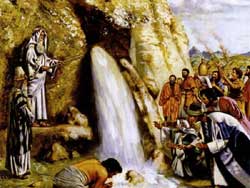
Moses finds water with a rod - The Chinese Emperor Kuang Yu is portrayed with a dowsing fork. The inscription reads: "Yu of the Hsia Dynasty was a master in the science of the earth and in those matters concerning water veins and springs."
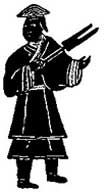

Chinese Emperor Kuang Yu with a dowsing fork about 2200 B.C.
- The Egyptians had sophisticated pendulums and instruments to heal, preserve and use. Extensive research into the Egyptians' use of such tools was carried out by French dowsers, of whom one of the most famous is Abbe Mermet.
- Dowsing as practiced today may have originated in Germany during the middle ages, where its use was documented in the finding of metals. The technique later spread to England by German miners who went there to work in the coal mines.

16th century miners using branches from willow trees to locate mineral deposits
- In the late 19th century English troops in India trained dowsers for at least six years and relied on them for finding water resources.
- With the beginning of the 20th century, dowsing became very popular in central Europe.
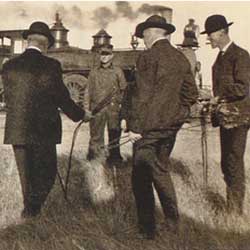
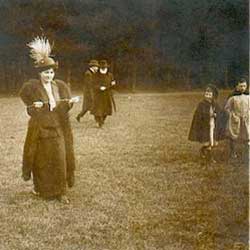
Early 1900's Dowsers in North Dakota and Dowsing competition in Paris around 1930
- In the late 1960s, it is a little known fact that during the Vietnam War, United States Marines were taught to use dowsing to attempt to locate weapons and secret tunnels of the Vietcong.
Dowsing is used to detect subtle influences on the body
Dowsing is a method to investigate subtle influences on our body which affect our health, such as Geopathic Stress or electro-magnetic fields (EMFs). Being exposed to a harmful environment disturbs our biofield and is considered one of the causes of "modern" health issues (although "Science" needs some time catching up to this information).Dowsing instruments
Dowsing instruments by themselves are not magic wands, but are tools that assist the dowser who is tuning into subtle energy fields and their frequency information.The four most common dowsing tools are:
- Y-shaped rods from trees or bushes, often hazel or willow trees. The traditional forked rod is what my father used to find water in Austria, where he located well sites for many people, home owners in the country side and farmers who were looking for the best place for their well. Modern materials for dowsing rods include wire, and also plastic rods and even flexible bands which can be bent easily and held under tension like an original tree branch.
- Pendulums have been widely used since the Egyptians. Pendulums can be made of stone, crystals, and metals, especially brass. A simple one can be made just by using a ring or any small heavy object on a string for a simple trial.
- L-rods in various designs are most popular among water dowsers today and can be made from brass, easily bent from coat hangers. They move horizontally and change direction when crossing a field with different polarity or flow.
- Tensors or "bobbers" are one hand dowsing instruments, popular in Europe because they are very sensitive, precise and fast to work with.


L-rods (left side) and Tensors (right side) are used to dowse land energies
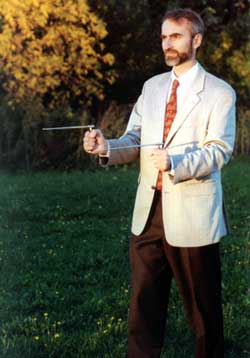
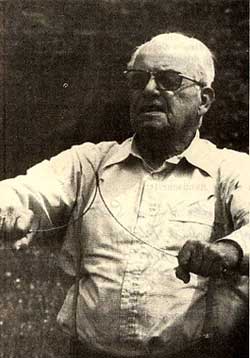
The author using L-rods (left side) and Anton Benker using a Y-rod (right side)
Learn more about dowsing and find a local dowsing chapter for some practice at the American Society of Dowsers at www.Dowsers.org or check out our dowsing supply at www.geopathic-stress-solutions.com.